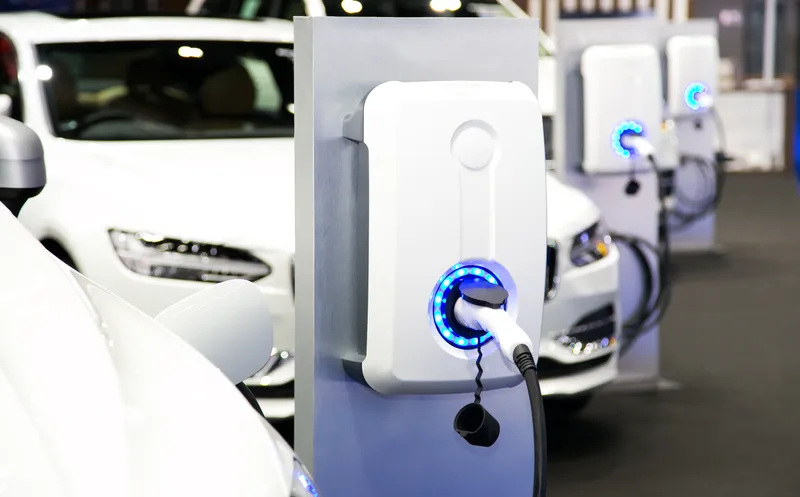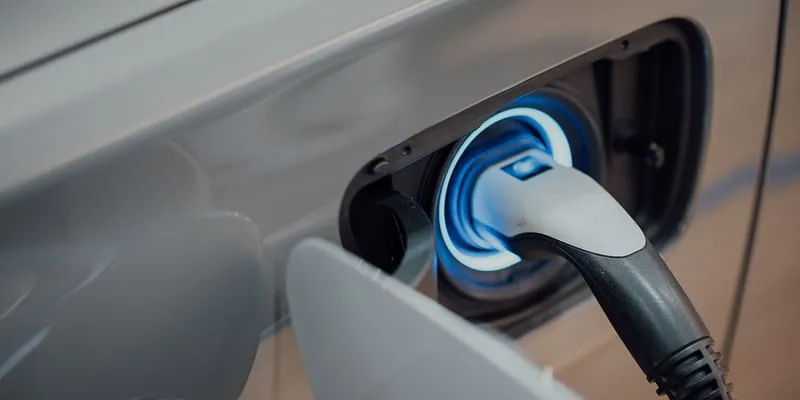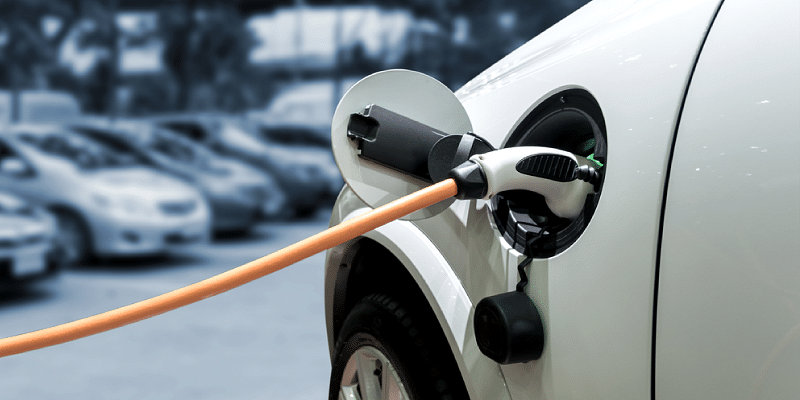- Localisation of the EV supply chain is crucial for its expansion, says NITI Aayog’s adviser on infrastructure connectivity, transport, and e-mobility, Sudhendu Sinha
- Localisation can help make EVs safer, decrease costs, and boost expansion.
- Localisation of cell production will remove major supply chain-related bottlenecks
- Startups should work on making financing of EVs easier
While the implementation of subsidies for electric vehicles (EVs) through the Faster Adoption and Manufacturing of Hybrid/Electric Vehicles (FAME) scheme since 2015 has significantly propelled EV adoption in the country, its subsequent expansion hinges on localisation of the supply chain by manufacturers, says Sudhendu Sinha, ‘s adviser on infrastructure connectivity, transport, and e-mobility.
In a conversation with YourStory, Sinha stresses that localisation of the EV supply chain is the quintessential solution to predicaments faced by the ecosystem presently.
According to him, localisation can help in three ways:
- Make EVs safer: Having total control over the supply chain can establish certain non-negotiable, government-mandated quality standards, thus averting serious and common accidents, particularly in electronic components such as batteries.
- Help decrease costs: By procuring indigenous raw materials for EV construction, sans ancillary costs such as customs duties or import fees, the manufacturing process can become more economical, and these advantages can subsequently be disseminated to the end-users, making them widely accessible.
Sinha says the cost of EVs today is a big entry barrier for most consumers.
“India, being a price-sensitive market, needs EVs to become more and more cost-competitive, at least compared with their combustion engine counterparts. Price parity will make it hard for people to ignore EVs, and we will see greater adoption of electric or hybrid vehicles in the passenger vehicle segment,” he explains.
- Faster scale-up: Having full command over the domestic supply chain can help eradicate bottlenecks associated with imports, ensuring a seamless and uninterrupted supply of raw materials. Companies raring to blitzscale will have the required materials to do so and not have to depend on foreign supply chains.

To make the supply chain more resilient, localisation is especially needed at the cell production level, which currently does not happen in India because of the unavailability of lithium.
Approximately 80% of India’s lithium is sourced from countries such as China, Taiwan, Argentina, and Australia. Additionally, the country imports cell packs primarily from Taiwan and China.
However, efforts to localise these operations are ongoing.
The government has mandated EV companies to recycle existing lithium-ion batteries to give them a second life and be re-used in EVs or for other purposes, such as energy storage.
In February, the government discovered 5.9 million tonnes of untapped lithium reserves in Jammu and Kashmir, which it hopes to deploy to accelerate the EV sector and meet its internal clean-tech and clean-energy goals.
“When it comes to advanced chemistry cell manufacturing, we have achieved 25% localisation, and we’re hoping that in the next three years, we’ll at least have 60% localisation,” Sinha says.
“After extensively studying cell manufacturing facilities, we’ve realised that it takes at least two years to set up a manufacturing base for advanced chemistry cell production,” he adds.
Moving on from 2Ws
FAME II is a landmark subsidy programme for India’s EV sector as it provides for not just one type of vehicle, but across categories.
One of the biggest targets for the scheme was the electrification of two-wheelers. In 2022-23, India had 8.46 lakh two-wheelers on the roads, of which 1.08 lakh were electric.
FAME II mandated that a subsidy of Rs 15,000 per kilowatt-hour, up to 40% of the vehicle cost, be granted. By 2022-end, around 7.1 lakh electric two-wheelers had availed of FAME II subsidies, according to government data.

Going forward, Sinha believes two-wheelers should not be given any more subsidies.
“In my specific and personal opinion, my sense is that because a considerable number of two-wheelers have been sold already, prices are gradually coming down, safety standards have gone up, and more models of scooters are coming out— incentives are no longer needed.”
Instead, he believes, public transportation and large commercial fleets should be incentivised to go electric.
Last week, YourStory, citing three sources, reported that FAME III—or the ensuing array of subsidies—is expected to prioritise incentivising charging infrastructure instead of providing purchase subsidies, while also encompassing trucks and buses employed for public transportation and commercial ventures.
Pricing woes
Asked about the longer-term challenges facing the sector, Sinha says prices for personal vehicles are the biggest hurdles original equipment manufacturers (OEMs) need to overcome to boost adoption, especially for four-wheelers.
“I’d say EVs, especially four-wheelers, are still not affordable. If a larger portion of the manufacturing of components and battery packs occurs domestically, prices would inevitably decrease.”
But until that happens, at least financing of EVs should become better, he says.
Giving out loans for EVs is quite a challenge owing to the inability of financing agencies to adequately underwrite the market. Even banks offering EV financing tread cautiously because a secondary market for reselling EVs isn’t as developed, and there is a limited understanding of the resale value of these automobiles.
But that perception needs to change—and it is already changing in a lot of ways.
“Financial agencies are gradually developing confidence in the EV market, though. It’s a process, and it’s slow, but we’re getting there,” says Sinha.
“Startups can really take charge and do something innovative in this space,” he adds.

EV charger plugged into a car
Need for skilling
In India, the EV ecosystem presents ample opportunities for innovation, extending beyond technical advancements to encompass various other facets.
For instance, innovative business models, financing mechanisms, and policy frameworks are essential for promoting EV adoption and achieving the vision of a cleaner, greener future.
However, the acquisition of skills and knowledge—vital components for success—currently remains a limited opportunity, inaccessible to many.
While 16 of the 23 Indian Institutes of Technology (IITs) have dedicated programmes for EVss, gaps in blue-collar skills still need to be sealed.
Sinha says companies in the sector should take the initiative to plug these holes.
“EVs are a new mobility paradigm for India. While certain OEMs are currently providing their personnel with training on advanced technologies and essential maintenance and handling-level skills, more companies should follow suit and work to create upskilling opportunities.”
Schools and universities should also actively encourage small student groups to work on solving both small and large-scale issues of electric mobility, he adds.



![Read more about the article [Funding alert] Enterprise commerce AI provider Hypersonix raises $35M in Series B round led by B Capital Group, others](https://blog.digitalsevaa.com/wp-content/uploads/2021/07/Untitled-11566296494948-1625109470547-300x150.png)

![Read more about the article [Funding alert] BharatPe raises Rs 50 Cr in debt from Northern Arc](https://blog.digitalsevaa.com/wp-content/uploads/2021/05/Eajz3g3UMAAI0aX-1608619243276-1620627263215-300x150.jpg)




